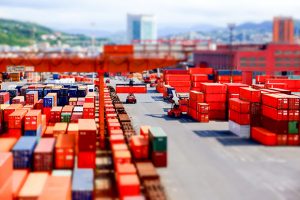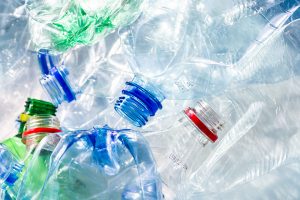 M&G, one of the world’s largest producers of virgin PET for packaging, has shut down production plants. Market repercussions from the move could mean higher prices for recycled material.
M&G, one of the world’s largest producers of virgin PET for packaging, has shut down production plants. Market repercussions from the move could mean higher prices for recycled material.

 M&G, one of the world’s largest producers of virgin PET for packaging, has shut down production plants. Market repercussions from the move could mean higher prices for recycled material.
M&G, one of the world’s largest producers of virgin PET for packaging, has shut down production plants. Market repercussions from the move could mean higher prices for recycled material.
 A survey of plastics converters in Europe shows many of them have trouble obtaining enough acceptable-quality recycled plastic feedstock.
A survey of plastics converters in Europe shows many of them have trouble obtaining enough acceptable-quality recycled plastic feedstock.
 A confluence of factors has led logistics experts to predict that American firms, including those in the recycling industry, will experience higher over-the-road shipping costs in the next six months.
A confluence of factors has led logistics experts to predict that American firms, including those in the recycling industry, will experience higher over-the-road shipping costs in the next six months.
 A plastic packaging industry publication is criticizing the recycling industry’s shock and concern over China’s import restrictions, which the writer says are part of a measured and well-publicized effort that’s been in effect for more than a decade.
A plastic packaging industry publication is criticizing the recycling industry’s shock and concern over China’s import restrictions, which the writer says are part of a measured and well-publicized effort that’s been in effect for more than a decade.
 More than three months after China announced it will restrict recyclables imports, key details on logistics and timing of the new regulations remain unknown. But industry associations are piecing together some more concrete facts about the downstream and upstream ramifications of the actions.
More than three months after China announced it will restrict recyclables imports, key details on logistics and timing of the new regulations remain unknown. But industry associations are piecing together some more concrete facts about the downstream and upstream ramifications of the actions.
 The U.S. PET bottle recycling rate dropped from 30.1 percent to 28.4 percent in 2016, a number that is emblematic of several concerning trends hitting the sector.
The U.S. PET bottle recycling rate dropped from 30.1 percent to 28.4 percent in 2016, a number that is emblematic of several concerning trends hitting the sector.

Roche Harbor on San Juan Island in Washington.
Municipal programs in the Pacific Northwest continue to feel the impacts of China’s import restrictions, and multiple local programs are halting acceptance of plastics and other materials in response.
 Great potential exists for increased film recovery in North America, where the residential film recovery rate sits at about 4 percent. Experts have identified key sectors that would be effective targets for coordinated investment.
Great potential exists for increased film recovery in North America, where the residential film recovery rate sits at about 4 percent. Experts have identified key sectors that would be effective targets for coordinated investment.
 P&G, Coca-Cola and a handful of other major companies have committed to using products containing post-consumer resin in a range of storage and shipping applications, as part of a new program from the Association of Plastic Recyclers.
P&G, Coca-Cola and a handful of other major companies have committed to using products containing post-consumer resin in a range of storage and shipping applications, as part of a new program from the Association of Plastic Recyclers.
 The upstream impacts of China’s import restrictions have been increasingly covered in national and local press, raising the level of public consciousness about where recyclables ultimately end up and how that could all change.
The upstream impacts of China’s import restrictions have been increasingly covered in national and local press, raising the level of public consciousness about where recyclables ultimately end up and how that could all change.
